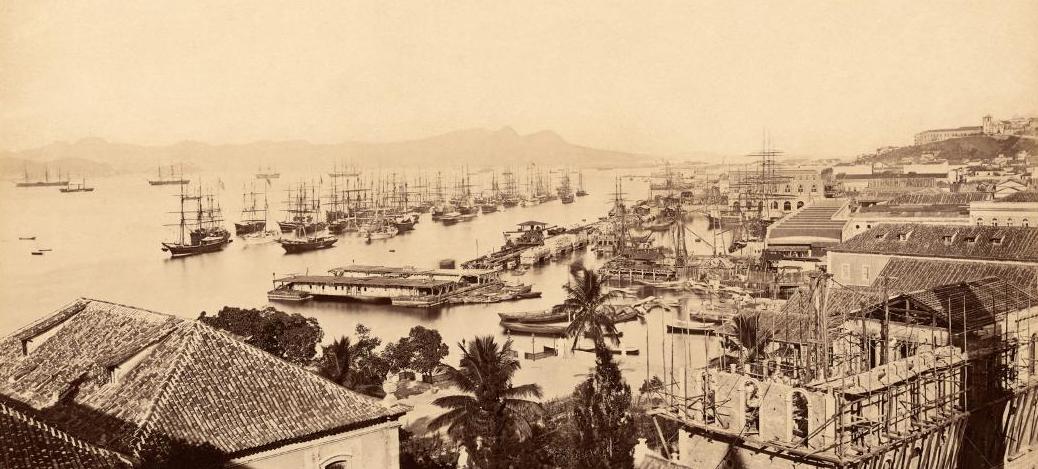American Music of the Ottoman Diaspora
Episode 412
Feed | iTunes | GooglePlay | SoundCloud
During the late 19th and early 20th centuries, hundreds of thousands of people from the Ottoman Empire and post-Ottoman states emigrated to the U.S. Among them were musicians, singers, and artists who catered to the new diaspora communities that emerged in cities like New York and Boston. During the early 20th century, with the emergence of a commercial recording industry in the United States, these artists appeared on 78 rpm records that circulated within the diaspora communities of the former Ottoman Empire in the United States and beyond, singing in languages such as Turkish, Arabic, Greek, Armenian, Assyrian, Kurdish, and Ladino. Their music included folks songs from their homelands and new compositions about life and love in the diaspora. In this episode, Ian Nagoski of Canary Records joins the podcast to showcase some of these old recordings, which he has located and digitized over the years, and we discuss some of the remarkable life stories of these largely forgotten artists in American music history.
Stream via SoundCloud
Contributor Bios
 |
Ian Nagoski is a music researcher and record producer in Baltimore, Maryland. He writes and lectures regularly and has produced reissue CDs, LPs, and digital releases for the Dust-to-Digital, Tompkins Square, Mississippi, Important, Sound American, and his own Canary Records labels. |
 |
Chris Gratien is Assistant Professor of History at University of Virginia, where he teaches classes on global environmental history and the Middle East. He is currently preparing a monograph about the environmental history of the Cilicia region of the former Ottoman Empire from the 1850s until the 1950s. |
Credits
Episode No. 412
Release Date: 1 June 2019
Recording Location: Washington, DC
Audio editing by Chris Gratien
Images, bibliography and digitized audio courtesy of Ian Nagoski
Track List
Mary Steele, "Nare"
Gülistan Hanım and Arab Muhammad, "Hürriyet Şarkısı: Gecemiz Gündüz Oldu (Song of Freedom: Our Night Turned to Day)"
Kosroff Malool, "Kurd Havası"
Alexander Maloof, "Al-Ja-Za-Yer"
Achilleas Poulos, "Neden Geldim Amerikaya (Why Did I Come to America?)"
Nishan Keljikian with Gulazian’s, "Ouskeh Gukas (Where Do You Come From?)"
Zabelle Panosian, "Groung (Crane)"
Marika Papagika, "Smyrneiko Minore"
Edward Bogosian, "Sood E, Sood E (Everything's a Lie)"
Virginia Magidou, "Tsiapkina Amerikana (Saucy American Girls)"
Dr. J.K. Sutherland, "Huseini Tacsim"
Release Date: 1 June 2019
Recording Location: Washington, DC
Audio editing by Chris Gratien
Images, bibliography and digitized audio courtesy of Ian Nagoski
Track List
Mary Steele, "Nare"
Gülistan Hanım and Arab Muhammad, "Hürriyet Şarkısı: Gecemiz Gündüz Oldu (Song of Freedom: Our Night Turned to Day)"
Kosroff Malool, "Kurd Havası"
Alexander Maloof, "Al-Ja-Za-Yer"
Achilleas Poulos, "Neden Geldim Amerikaya (Why Did I Come to America?)"
Nishan Keljikian with Gulazian’s, "Ouskeh Gukas (Where Do You Come From?)"
Zabelle Panosian, "Groung (Crane)"
Marika Papagika, "Smyrneiko Minore"
Edward Bogosian, "Sood E, Sood E (Everything's a Lie)"
Virginia Magidou, "Tsiapkina Amerikana (Saucy American Girls)"
Dr. J.K. Sutherland, "Huseini Tacsim"
Images
 |
| Ottoman immigrants massed at Ellis Island. Photo via the Brown Brothers. |
 |
| Marika Papagika (b. 1890; d. 1942) as the cover star of Victor Records' July 1921 Greek-language catalog. Photo via Hugo Strotbaum. |
 | ||
An example of the sleeves for the Pharos label run out of the Vartesian Brothers' jewelry and watch repair shop on 3rd Avenue in Manhattan in the mid-to-late 1920s.
|
 |
| Early 1920s promotional lyric sheet from M.G. Parsekian's own label. Via the Armenian Library and Museum of America. |
 |
| December, 1942 photo by Marjorie Collins (1912-85) under the WPA at the Oriental Restaurant at 160 Allen St in the Lower East Side owned by Joe Levy. The man on the left is Louis Matalon, the Sephardic singer who was the first to have performed in the Ladino language on records in America in the 1910s with his Stamboul and Smyrna Quartets and with whom Doneff recorded in the 1940s. The singer on the right is Evelyn Maroon, who born about 1908 to parents from Beirut and raised in the small town of Hampden, Massachusetts (near Springfield). She is not known to have recorded. Via the Library of Congress |
 |
| December, 1942 photo by Marjorie Collins (1912-85) under the WPA at the Oriental Restaurant at 160 Allen St in the Lower East Side owned by Joe Levy. On the left is Nicola Doneff (b. 1891, Dichin, Bulgaria), who lists the cafe as his employer on his draft registration at the time (at which time he was 5'8" and 235 pounds), and who was the de facto house fiddler for the Metropolitan-Balkan-Kaliphon circle of labels. He also patented the Kaliphon label and logo in 1947. The santouri player remains untraced. Via the Library of Congress. |
 |
| Zabelle Panosian (b. Bahçecik, June 7, 1891; d. 1986), photographed ca. 1916, shortly before her first Columbia recording session, April 1917 . Via John Keazirian |
Select Bibliography
Frank Ahmed. Turks in America: The Ottoman Turk’s Immigrant Experience. The author, 1993.
Souren Baronian and J.P. Harpignies. The Magic Carpet Ride: My Life So Far. Coolgrovepress, 2011.
Gail Holst-Warhaft. “A Sudden Longing: Lamenting the Lost City of Smyrna” in The Fall of Cities in the Mediterranean, M.R. Bacharova, D. Dutsch, A. Suter, editors. Cambridge University Press, 2016.
Linda K. Jacobs. Strangers in the West: The Syrian Colony in New York City, 1880-1900. Kalimah Press, 2015.
Jerrold Northrop Moore. Sound Revolutions: A Biography of Fred Gaisberg, Founding Father of the Commercial Sound Recording. Sanctuary Publishing, 1999.
Najib E. Saliba. Emigration from Syria and the Syrian-Lebanese Community of Worcester, MA. Antakya Press, 1992.
Richard K. Spottswood et al. Ethnic Recordings in America: A Neglected Heritage. Library of Congress, American Folklife Center, 1982.
Edward A. Steiner. On the Trail of the Immigrant. Fleming H. Revell, 1906.












Comments
Post a Comment
Due to an overwhelming amount of spam, we no longer read comments submitted to the blog.